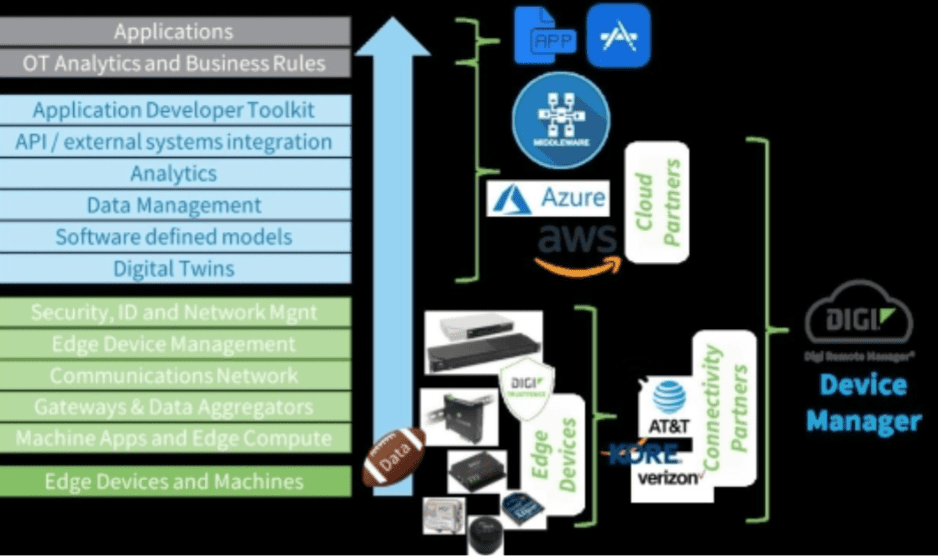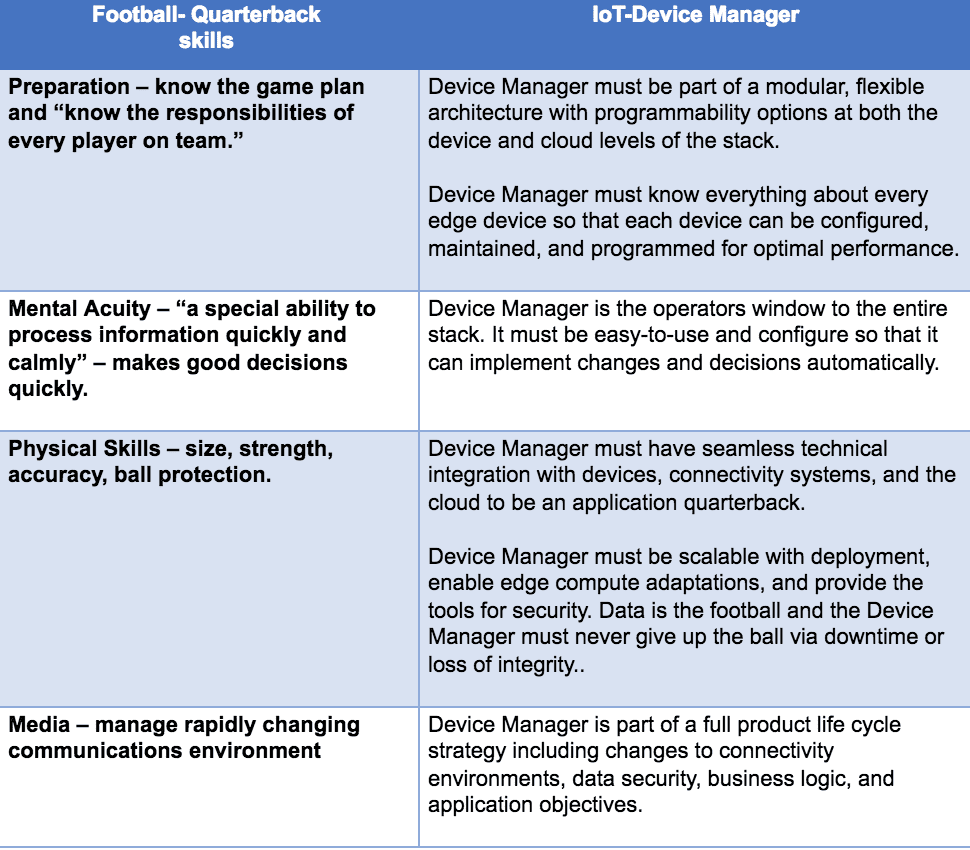What does football have to do with the internet of things? More than you know
It’s Sunday. NFL football is on our TV and the word for the week in my wife’s photography club is anthropomorphism. NFL football is all about quarterbacks. The pundits obsess or rave about quarterbacks every week and the league is changing the game so that good quarterbacks are never even touched during the game. When I think about a good Internet of Things (IoT) application stack I think of the ecosystem players as a team and how well that team performs is all about the Device Manager. The good quarterback facilitates getting the football to the endzone. A good Device Manager facilitates the data through the application stack to effect the desired outcome. Just like football, an IoT application stack fails if the Device Manager falls. Without the Device Manager the various components and ecosystem partners of the stack don’t get the data or instruction they need to know which actions to take at the edge to serve the customer. The Device Manager is the “Quarterback of the Stack”.
Let’s expand the metaphor, compare the roles in the “game” and assign the positions on the teams.
Obviously, data is the football of the IoT. Play starts when the data originates and a score happens when that data is converted into action. Data transformed into action that creates value is the goal of every IoT application. So edge devices, sensors and aggregators, are clearly the centers of the IoT – they hike the ball. In football the snap goes to the quarterback99% of the time. In the IoT the Device Manager doesn’t always “get” the data but it tells the edge devices where to send that data. The data can be directed to cloud partners like AWS, Azure, or others, directed to edge applications embodied on the device for immediate action, or forwarded to mobile devices in the hands of action-takers.
Those on the offensive line is the protectors of the data – secure elements, encryption, secure connections, secure storage, and secure applications. As with the quarterback in football, the Device Manager directs, enables, and deploys the security functions of the IoT stack. This is one of the most important functions of a good Device Manager – protecting the ball.
The various applications of analytics and data presentation in the stack are the running backs and receivers who score by enabling action. An interesting breakdown in the metaphor is when the action is taken by other machines, i.e. closed loops and full automation. I’m not sure football has an equivalent to that benefit of IoT – perhaps Madden NFL games.
Now that we have our teams assigned, let’s look at what makes a good quarterback and a good Device Manager – see how they compare. Quarterbacks are typically seen from two points of view – leadership/personal traits and functional skills. In the IoT the former informs the business efficacy of a Device Manager and the latter points to the technical features a good Device Manager must have. Let’s complete the metaphor with the help of the football analysts.
A good Device Manager leads the application stack in the same way a good quarterback leads the entire team to victory.

Just like quarterback’s skills, Device Manager functions enable a prepared leader to bring the team to success.

The metaphor, a simple anthropomorphism, seems strong. In the same way an NFL quarterback leads and facilitates the team to victory, a Device Manager integrates and facilitates the execution of the IoT stack to application and thus business success.
Device Manager is the quarterback of the stack.

